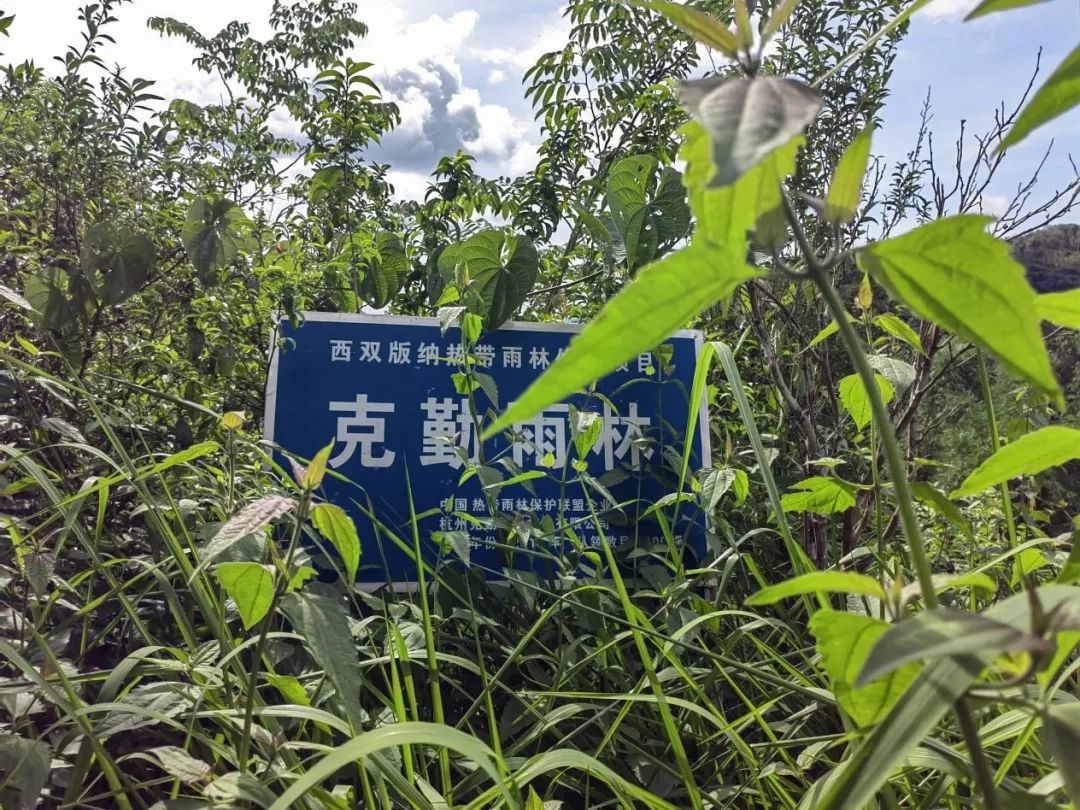15
2023.08
From the hillside of Jinuo Mountain, a winding cement road of about 4.5 km, leads to the remaining relic of Bapiao Village, beside which is a restored rainforest. At the hilltop, some newly-planted tropic plants such as rosewoods and antiaris toxicarias are growing vigorously, with colorful notices saying its sponsor. Visitors came by from time to time to experience a “rainforest walk.”
This is a scene of a progressing rainforest restoration program in Xishuangbanna, Yunnan, China. Its current result is encouraging. During the past 5 years, about 33 acres of rainforest with more than 30 thousand trees were restored in just one village. Nature also responds to humans’ efforts. 64-year-old villager Bao Bulu said, the wild Asian elephants, which have disappeared in this area for about 20 years due to lack of food, reappeared in 2021 with the restoration of rainforest.

Bao Bulu
(Photo by Guo Wenqing)
Back in the 1990s, villagers’ large-scale cultivation of rubber trees as cash crops destroyed large areas of tropical rainforest. According to a research team of Xishuangbanna Tropical Botanical Garden, Chinese Academy of Sciences, about 400,000 hectares of tropical rainforest had been lost in the past 30 years. Specifically in Bapiao village, the cultivation of rubber needs plenty of water, which drained the soil of moisture. Also, a rubber field isn’t suitable for any other crops, and the biodiversity of this area was destructed as well.
However, as the price of rubber dropped sharply in 2013, the economic value of the rubber fields decreased, while the local ecological condition kept on deteriorating. In this case, the wide engagement of diverse actors including the local government, NGOs, enterprises, villagers, and people from all walks of life who cared about rainforest conservation contributes jointly to tackling this problem.
The rainforest restoration program was officially launched in 2018 by Xishuangbanna Tropical Rain Forest Conservation Foundation and Xishuangbanna Longxiang Tourism Co., LTD under the support of local government. As introduced by Li Chun, the project leader and Cai Min, the media manager of the project, the Foundation, as the initial founder, investigated the condition of the rainforest, taught villagers about forest management, and annually supervised their work.
“Villagers offer their rubber fields above 900 meters above sea level that are not suitable for rubber cultivation to the Foundation for tropical tree planting, and the Foundation pays the villagers management fee annually, that’s the cooperation mode.” Said Bulu Du, a contact person of the Foundation and local villager.

Bulu Du
(Photo by Zang Linxi)
With the restoration of rainforest, villagers are free from hard and unrewarding labor to develop tourism, and that’s where the Tourism Enterprise works. Dao, the first participator of the program said, “With the program, more diversified sources of income, such as being the guide, operating a restaurant, and selling the tea leaves and fruits. The income of my family has been more than 5 times higher than before.”
After the economic effect of this program was revealed, the enthusiasm of the villagers ran high. With the constant mobilization of villagers by the foundation and village cadres and the attraction of an increased income, up to 2023, more than 40 of the 60 families in the village have voluntarily joined in.
The program offered a new way of life for these former farmers. “We’re truly living a better life now,” Bao, whose family joined the program in 2019 and now runs a shop, said with a satisfied expression, “Even some villagers regret not joining earlier.”
For the first two years of the project, the local government funded the project. To make the program more sustainable, the foundation tries to raise funds from the public, inviting those sponsors to plant a tree by themselves. Today, the project has been running on public funding by itself.

A notice showing the sponsor of this field
(Photo by Guo Wenqing)
This also makes more people understand the importance of tropical rainforest protection in Xishuangbanna. As the Secretary General of the foundation Zhang Xiyan wrote in an online article published on the Wechat platform, “If they had not personally come to Xishuangbanna to see the rubber forests all over the mountains and understand the profound impact of rubber on the ecological environment, local wildlife and the lives of ethnic minorities, few people would have understood why they came to Xishuangbanna to plant trees.”
According to the annual survey by the World Resources Institute (WRI), the world lost 10.2 million acres of primary rainforest in 2022, a 10 percent increase from the year before. It’s also warned by the Food and Agricultural Organization of United Nations (FAO) that the global genetic diversity of trees, is being threatened and eroded for various reasons, which poses a threat to food security, human health, and livelihoods of millions of people.
The project is ready to engage more people and promote the influence of the notion to return rubber trees to rainforest across the Jinuo Mountain. Bai Yunping, a villager from the next village Bapo, is looking forward to the expansion of this project. “I didn’t know much about this program before, so I think this program deserves greater promotion,” She said frankly, “But after learning about it, I hope my village could join in as well.”
By engaging diverse actors, the rainforest restoration in Jinuo Mountain is progressing steadily, which also provides the world with a Chinese solution to this global issue.
Writer | Guo Wenqing
Design | Fu Wei

2025.12.05 14:59
05
2025.12
05
2025.12
05
2025.12
 28:32
28:32
2025.06.19 08:55